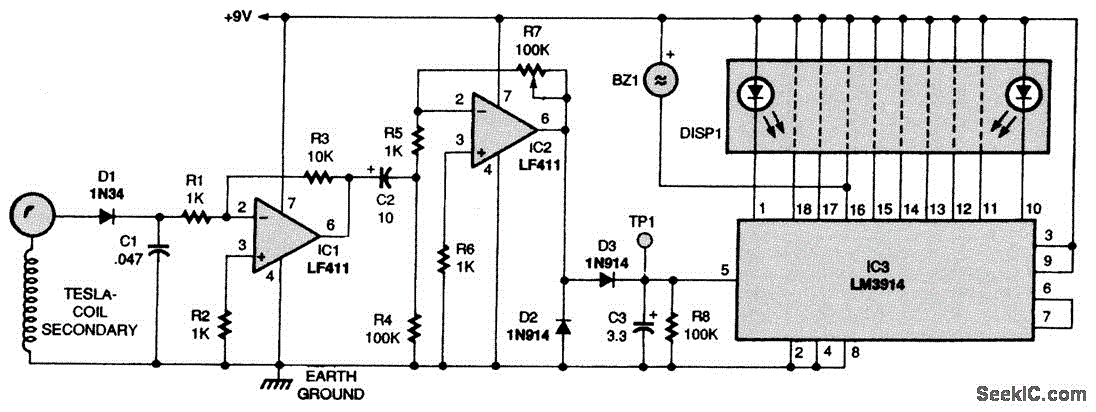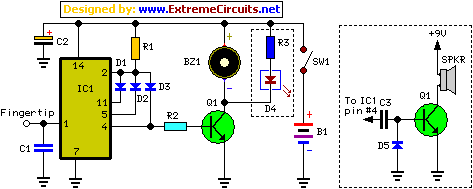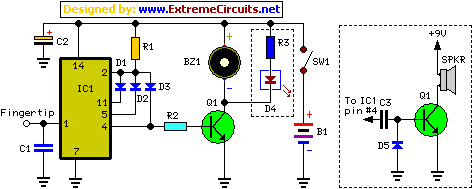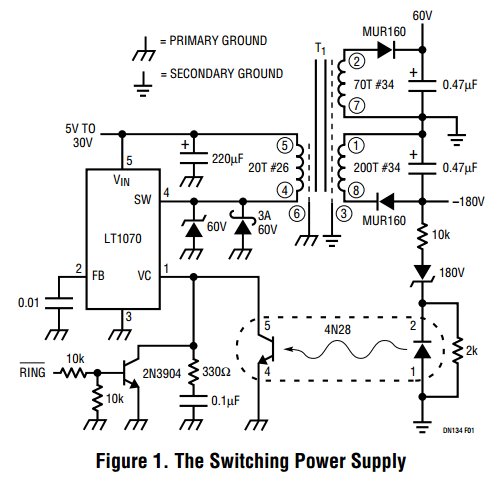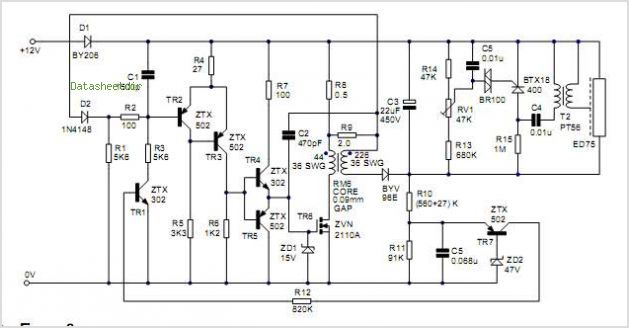
second generation reciprocating
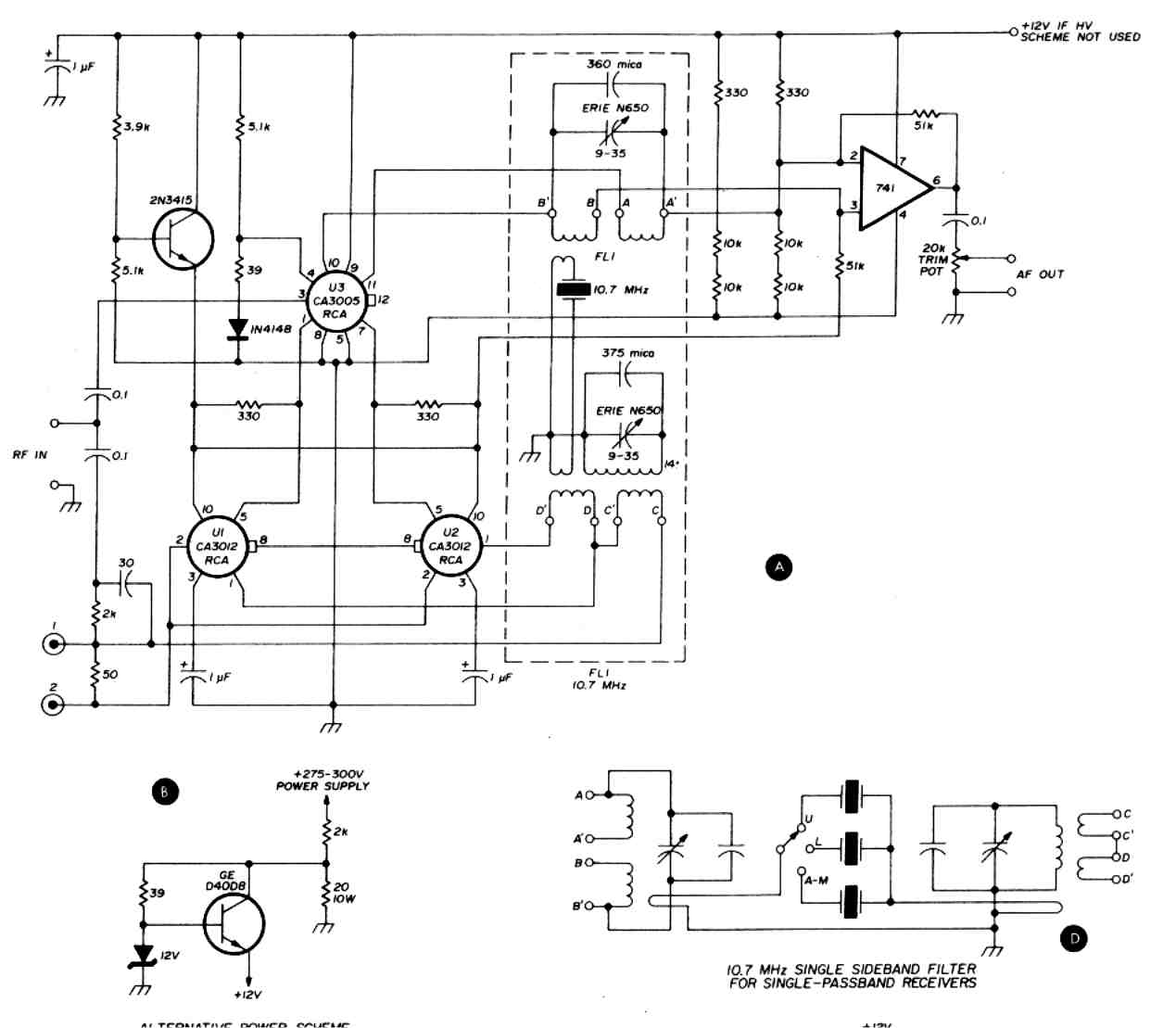
The reciprocating detector was designed by R. S. Badessa at MIT. The RD features a carrier-synthesized reference signal and requires no external beat frequency oscillator (BFO). The circuit offers advantages over conventional detectors by automatically adjusting its BFO level in proportion to the average signal level received. First introduced in ham radio in March 1972, the RD has undergone several transformations. The version presented here employs integrated circuits (ICs) and is compatible with modern semiconductor-based receivers. Additionally, a design for a 10.7 MHz single sideband (SSB) filter for single-passband receivers is included. In the past three years, there have been numerous requests for revisions to the reciprocating detector circuit to enable its direct use at high frequencies. An updated IC design has been developed for operation at frequencies up to 20 MHz, which necessitated careful circuit layout to minimize inter-circuit coupling and to maintain the correct phase relationship within the feedback loop. The detector functions as a half-wave rectifier, requiring a current-regulating source to be adjusted so that the signal diode operates just below conduction. Above 5 MHz, the diode and its circuitry fail to perform uniformly, resulting in a distorted detected signal. Despite the distortion, the circuit sometimes performs adequately for signal identification, although improvements are necessary. A solution for specific cases involved adjusting the bias level for the current-source diode until it conducted on noise. In many instances, with tube receivers producing intermediate frequency (IF) signals exceeding the saturation level of the entire circuit, clipped responses occurred, making single sideband signals difficult to manage due to fluctuating signal levels that older automatic gain control (AGC) systems could not regulate. The original circuit was designed for receivers like the Collins 5151 and Drake R4A, which feature highly selective dual or adjustable filters in the receiver IF passband. In the 5151 receiver, the IF output was connected to the RD through a cathode follower, with a maximum output level of 3 volts. The application using the Drake R4A employed sufficient attenuation through coupling to the original product detector output transformer to prevent saturation. The updated design utilizing ICs allows the RD to be integrated into more contemporary receivers. Models of the new circuit have been developed for 10.7, 16, and 20 MHz. Test models were initially constructed using point-to-point wiring, later transitioning to printed circuit boards (PCBs). The circuit comprises two amplifier chips, IC1 and IC2, which are monolithic wideband amplifiers with a frequency response ranging from 10 kHz to 20 MHz. These chips are 10-lead devices housed in TO-5 cans. A third RF amplifier, IC3, serves as a balanced differential amplifier featuring an internal constant-current source, effectively addressing the original issue created by the biased half-wave rectifier. This amplifier operates across a frequency range of 0-100 MHz, enabling the circuit to function similarly to the original current source for the detector and the reciprocating switch. These enhancements represent significant improvements over the previous design, with the dynamic range enhancement alone justifying the redesign effort. The signal flow through the circuit begins with a capacitive input circuit that couples the RF signal into the input of IC3. This capacitive coupling isolates any direct current that may be superimposed on the RF signal from the IF output circuit. The input signal is subsequently routed through a phase-shift network before being directed to one set of inputs of IC1 and IC2. These three inputs are then provided with a signal path that is essentially in series with the reference signal, or beat frequency, akin to a conventional product detector.
The schematic of the reciprocating detector MKII, utilizing wideband-amplifier ICs, illustrates the circuit's layout and functionality, demonstrating the advancements made in this design iteration.The The reciprocating detector was designed by R. S. Badessa at M. I. T. The RD features a carrier-synthesized reference signal and requires no external bfo. The circuit offers advantages over conventional detectors in that it adjusts its bfo level automatically in proportion to the average signal level received. First introduced in ham Radio in March, 1972, the RD has gone through several metamorphoses. The version presented here uses ICs and can be used in modern receivers using semiconductors. Also included is a design for a 10. 7-MHZ ssb filter for single-passband receivers. Editor. During the past three years I`ve had many requests for revisions to the reciprocating detector circuit so that it can be used directly at high frequencies. Here`s an updated IC design that can be used at frequencies up to 20 MHz. required very careful circuit layout to reduce or eliminate inter-circuit coupling, and in particular to maintain the correct phase relationship required in the feedback loop.
Also, the detector portion operated as a half-wave rectifier. A current-regulating source had to be adjusted to cause the signal diode to operate at a level just below conduction, so that at frequencies above 5 MHz the diode and its circuitry ceased to perform uniformly. Result - a badly distorted detected signal. Despite the distortion, in some cases the circuit performed well enough for signal identification. But much was to be desired. A cure for individual cases was to adjust the bias level for the current-source diode until it just conducted on noise.
In most cases, with a tube receiver that produced i-f signals to the RD input exceeding the saturation level of the complete circuit, a clipped response occurred. Single sideband signals then became unmanageable because of widely varying signal levels that couldn`t be controlled by the agc systems in older tube receivers.
The original circuit was designed to be used in receivers such as the Collins 5151 and Drake R4A, which have highly selective dual or adjustable filters in the receiver i-f passband. In the 5151 receiver the i-f output was fed to the RD through a cathode follower; the maximum output level could not exceed 3 volts.
The application using the Drake R4A employed enough attenuation through the coupling to the original product detector output transformer to preclude saturation. An updated design, which uses ICs, allows the RD to be incorporated into more modern receivers. Models of the new circuit have been made for 10. 7, 16, and 20 MHz. Test models were constructed using point-to-point wiring. Later models used PC boards. The circuit consists of two amplifier chips, ICl, and IC2 (fig. 1). These are monolithic wideband amplifiers with frequency response between 10 kHz and 20 MHz. These chips are 10-lead devices in TO-5 cans. A third rf amplifier, IC3 is a balanced differential amplifier using an internal constant-current source, which eliminates the orignal problem caused by the biased half-wave rectifier.
This amplifier operates from 0-100 MHz. This wideband response allows the circuit to work in the same manner as the original current source for the detector and as the reciprocating switch. These two functions are improvements over the old circuit. The dynamic range improvement alone is worth the effort. Tracing the signal through the circuit, we see that a capacitive input circuit couples the rf signal into IC3 input.
The capacitive coupling isolates any direct current that might be superimposed on the rf signal from the i-f ouput circuit. The input signal is then applied to a phase-shift network, then to one set of inputs of IC1 and IC2. These three inputs are then provided with a signal path that`s essentially in series with the reference signal, or beat frequency similar to a conventional product detector.
fig. 1. Schematic of the reciprocating detector MKII using wideband-amplifier ICs, (Al. Also shown are an alt 🔗 External reference
The schematic of the reciprocating detector MKII, utilizing wideband-amplifier ICs, illustrates the circuit's layout and functionality, demonstrating the advancements made in this design iteration.The The reciprocating detector was designed by R. S. Badessa at M. I. T. The RD features a carrier-synthesized reference signal and requires no external bfo. The circuit offers advantages over conventional detectors in that it adjusts its bfo level automatically in proportion to the average signal level received. First introduced in ham Radio in March, 1972, the RD has gone through several metamorphoses. The version presented here uses ICs and can be used in modern receivers using semiconductors. Also included is a design for a 10. 7-MHZ ssb filter for single-passband receivers. Editor. During the past three years I`ve had many requests for revisions to the reciprocating detector circuit so that it can be used directly at high frequencies. Here`s an updated IC design that can be used at frequencies up to 20 MHz. required very careful circuit layout to reduce or eliminate inter-circuit coupling, and in particular to maintain the correct phase relationship required in the feedback loop.
Also, the detector portion operated as a half-wave rectifier. A current-regulating source had to be adjusted to cause the signal diode to operate at a level just below conduction, so that at frequencies above 5 MHz the diode and its circuitry ceased to perform uniformly. Result - a badly distorted detected signal. Despite the distortion, in some cases the circuit performed well enough for signal identification. But much was to be desired. A cure for individual cases was to adjust the bias level for the current-source diode until it just conducted on noise.
In most cases, with a tube receiver that produced i-f signals to the RD input exceeding the saturation level of the complete circuit, a clipped response occurred. Single sideband signals then became unmanageable because of widely varying signal levels that couldn`t be controlled by the agc systems in older tube receivers.
The original circuit was designed to be used in receivers such as the Collins 5151 and Drake R4A, which have highly selective dual or adjustable filters in the receiver i-f passband. In the 5151 receiver the i-f output was fed to the RD through a cathode follower; the maximum output level could not exceed 3 volts.
The application using the Drake R4A employed enough attenuation through the coupling to the original product detector output transformer to preclude saturation. An updated design, which uses ICs, allows the RD to be incorporated into more modern receivers. Models of the new circuit have been made for 10. 7, 16, and 20 MHz. Test models were constructed using point-to-point wiring. Later models used PC boards. The circuit consists of two amplifier chips, ICl, and IC2 (fig. 1). These are monolithic wideband amplifiers with frequency response between 10 kHz and 20 MHz. These chips are 10-lead devices in TO-5 cans. A third rf amplifier, IC3 is a balanced differential amplifier using an internal constant-current source, which eliminates the orignal problem caused by the biased half-wave rectifier.
This amplifier operates from 0-100 MHz. This wideband response allows the circuit to work in the same manner as the original current source for the detector and as the reciprocating switch. These two functions are improvements over the old circuit. The dynamic range improvement alone is worth the effort. Tracing the signal through the circuit, we see that a capacitive input circuit couples the rf signal into IC3 input.
The capacitive coupling isolates any direct current that might be superimposed on the rf signal from the i-f ouput circuit. The input signal is then applied to a phase-shift network, then to one set of inputs of IC1 and IC2. These three inputs are then provided with a signal path that`s essentially in series with the reference signal, or beat frequency similar to a conventional product detector.
fig. 1. Schematic of the reciprocating detector MKII using wideband-amplifier ICs, (Al. Also shown are an alt 🔗 External reference
